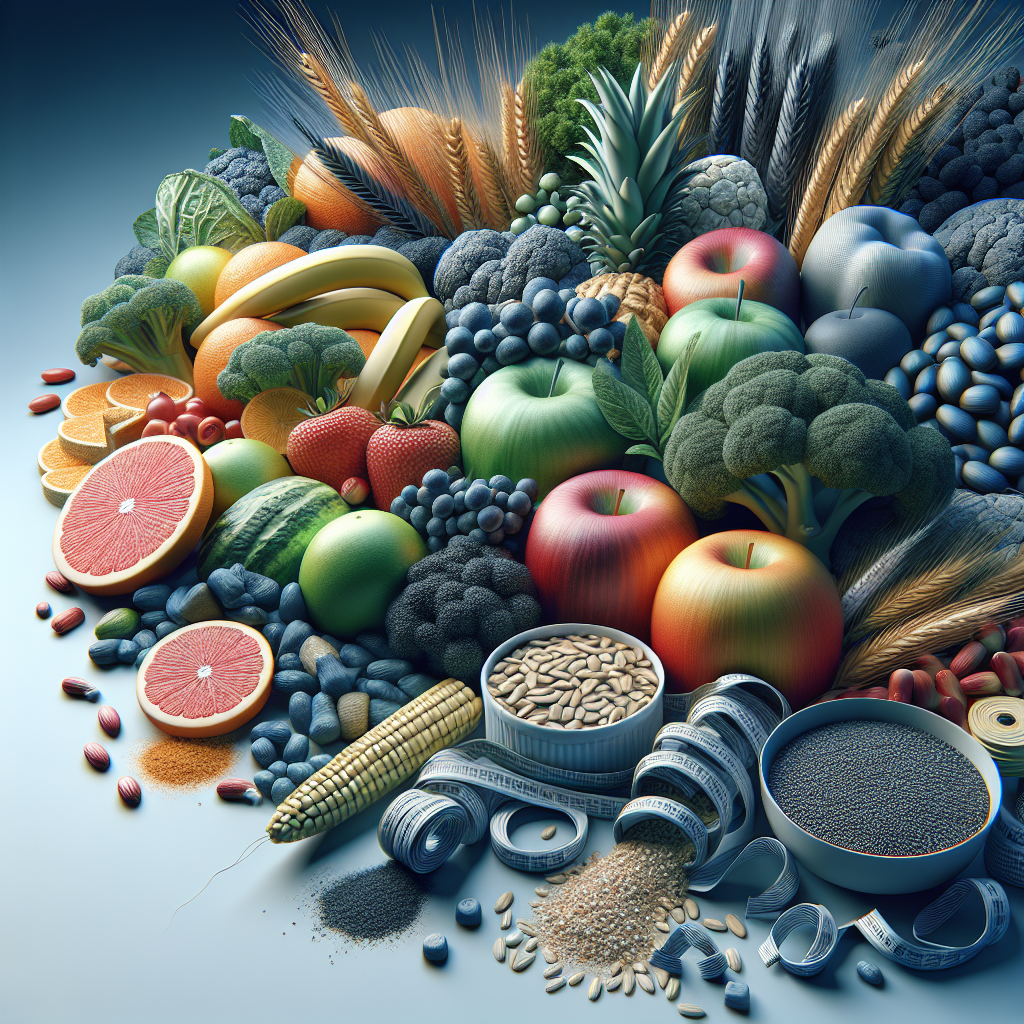In today’s fast-paced world, embracing a diet rich in anti-inflammatory foods can significantly enhance your well-being, reduce chronic disease risk, and promote overall health. These foods, characterized by their ability to reduce inflammation in the body, include a diverse array of fruits, vegetables, whole grains, and healthy fats. Incorporating these nutrient-dense options into your daily meals fosters an environment conducive to healing and vitality. This comprehensive guide will explore the principles of an anti-inflammatory diet, list specific food categories, and provide practical tips to help you integrate these foods into your lifestyle.
Understanding Inflammation and Its Impact on Health
Inflammation is a complex biological response that the body activates in response to injury, infection, or harmful stimuli. While acute inflammation is a vital part of the healing process, chronic inflammation can contribute to various health issues, including heart disease, diabetes, arthritis, and even some cancers. Understanding the types of inflammation will help in appreciating the role of dietary choices in health:
Types of Inflammation
- Acute Inflammation: This is a short-term response marked by redness, swelling, and pain, allowing the body to heal.
- Chronic Inflammation: This prolonged response can persist for months or years, often unnoticed, leading to tissue damage and gradual diseases.
The Link Between Diet and Inflammation
Emerging research indicates that certain dietary patterns can either exacerbate or alleviate inflammation. Diets high in refined carbohydrates, sugars, trans fats, and processed foods tend to promote inflammatory responses, while those rich in natural, whole foods help counteract these effects.
Key Categories of Anti-Inflammatory Foods
To cultivate an anti-inflammatory diet, focus on incorporating the following categories of foods:
1. Colorful Fruits and Vegetables
Fruits and vegetables are packed with vitamins, minerals, fiber, and antioxidants. The vibrant colors often indicate a higher concentration of beneficial compounds.
- Berries: Blueberries, strawberries, and blackberries are rich in antioxidants called flavonoids, which have been shown to reduce inflammatory markers.
- Leafy Greens: Spinach, kale, and Swiss chard are high in vitamins E and K, both essential for combating oxidative stress.
- Cruciferous Vegetables: Foods like broccoli, Brussels sprouts, and cauliflower contain sulforaphane, a compound known for its anti-inflammatory properties.
2. Healthy Fats
Fat is an essential macronutrient, but not all fats are created equal. Emphasizing healthy fats can help mitigate inflammation.
- Olive Oil: Extra-virgin olive oil contains oleocanthal, which mimics the anti-inflammatory effects of ibuprofen.
- Avocado: Rich in monounsaturated fats and antioxidants, avocados support cardiovascular health and inflammation reduction.
- Nuts and Seeds: Walnuts, flaxseeds, and chia seeds provide omega-3 fatty acids, which are crucial for modulating inflammatory processes.
3. Whole Grains
Unlike refined grains, whole grains retain their fiber and nutrient content, which is beneficial for gut health and can help reduce inflammation.
- Quinoa: A complete protein, quinoa is also high in anti-inflammatory compounds.
- Brown Rice: This whole grain is richer in fiber and antioxidants compared to white rice.
- Barley: High in beta-glucans, barley has been shown to decrease inflammatory markers.
4. Lean Proteins
Protein is vital for tissue repair and recovery, and choosing lean sources can aid in reducing chronic inflammation.
- Fish: Fatty fish like salmon, mackerel, and sardines are excellent sources of omega-3 fatty acids, known for their powerful anti-inflammatory effects.
- Legumes: Lentils, chickpeas, and beans are high in fiber and protein, offering additional antioxidants.
- Poultry: Skinless chicken and turkey provide a lean source of protein without excessive saturated fat.
5. Herbs and Spices
Incorporating specific herbs and spices into your cooking can enhance flavors and increase the anti-inflammatory potential of your meals.
- Turmeric: Contains curcumin, a potent anti-inflammatory compound that can help reduce joint pain and other inflammatory conditions.
- Ginger: Known for its anti-inflammatory and antioxidant properties, ginger can aid digestion and reduce muscle pain.
- Garlic: This flavorful bulb has been demonstrated to enhance immune function and combat inflammation.
6. Beverages
Drinks can also play a significant role in inflammation reduction. Here are some beverages to consider:
- Green Tea: Rich in polyphenols, particularly epigallocatechin gallate (EGCG), green tea is renowned for its anti-inflammatory properties.
- Bone Broth: Packed with collagen and amino acids, bone broth can promote healing and help reduce inflammation in the gut.
- Beet Juice: Beets contain betalains, which are known to have anti-inflammatory effects when consumed regularly.
Practical Tips for Integrating Anti-Inflammatory Foods into Your Diet
Transitioning to an anti-inflammatory diet doesn’t have to be overwhelming. Here are actionable tips to help you incorporate these foods seamlessly into your daily routine:
Meal Planning
- Plan Ahead: Set aside time each week to plan your meals. Include a variety of anti-inflammatory foods to ensure a balanced diet.
- Batch Cooking: Prepare meals in batches and store them in the fridge or freezer for quick, healthy options throughout the week.
Smart Cooking Techniques
- Use Healthy Cooking Methods: Opt for steaming, baking, grilling, or sautéing over frying to preserve nutrients and reduce harmful fat content.
- Experiment with Spices: Add ginger, turmeric, and garlic to your dishes for added flavor and health benefits.
Snacking Mindfully
- Choose Whole Foods: Keep a stock of fresh fruits, raw vegetables, nuts, and seeds on hand for healthy snacking.
- Homemade Snacks: Prepare energy balls using oats, nut butter, and seeds for a quick and nutritious energy boost.
Staying Hydrated
- Drink Water: Aim for adequate hydration as it plays a crucial role in reducing inflammation.
- Limit Sugary Beverages: Replace soda and high-sugar drinks with herbal teas, infused waters, or smoothies made with whole fruits and vegetables.
Sample Anti-Inflammatory Meal Plan
Creating a sample meal plan can guide you on how to combine various food groups effectively. Below is a one-day meal plan rich in anti-inflammatory ingredients:
| Meal | Foods/Ingredients |
|---|---|
| Breakfast | Overnight oats with chia seeds, berries, and almond milk |
| Snack | A handful of walnuts and an apple |
| Lunch | Quinoa salad with spinach, avocado, cherry tomatoes, and lemon-tahini dressing |
| Snack | Carrot sticks with hummus |
| Dinner | Grilled salmon with steamed broccoli and sweet potatoes |
| Dessert | Greek yogurt with a drizzle of honey and a sprinkle of cinnamon |
Research-backed Benefits of an Anti-Inflammatory Diet
The science supporting anti-inflammatory diets is robust. Numerous studies have shown the long-term health benefits associated with food choices that reduce chronic inflammation. Here are some key findings:
Cardiovascular Health
- Lowered Risk of Heart Disease: Evidence suggests that diets rich in fruits, vegetables, nuts, and healthy fats can significantly lower cholesterol levels and overall heart disease risk.
- Blood Pressure Regulation: An anti-inflammatory diet rich in potassium-containing foods (like fruits and vegetables) helps regulate blood pressure.
Improved Gut Health
- Gut Microbiome Balance: Foods high in fiber are associated with a healthy gut microbiome, helping to maintain proper digestion and reduce inflammation-related digestive disorders.
- Reduced Symptoms of IBS: Research indicates that many anti-inflammatory foods can alleviate symptoms of irritable bowel syndrome (IBS) due to their fiber and nutrient content.
Joint Health
- Alleviation of Arthritis Symptoms: Studies have shown that omega-3 fatty acids and other anti-inflammatory compounds found in food can reduce the severity of joint pain and stiffness associated with arthritis.
Enhanced Immune Function
- Stronger Immune Response: A diet rich in vitamins, antioxidants, and omega-3 fatty acids supports immune system function, enhancing the body’s ability to fight infections and diseases.
Weight Management
- Support for Healthy Weight Loss: Whole foods are generally lower in calories than processed options, making it easier to maintain a healthy weight while reducing inflammation.
Common Myths About Anti-Inflammatory Diets
As with any dietary trend, misconceptions can cloud the understanding of what anti-inflammatory eating truly entails. Addressing these myths can clarify the benefits of such a diet:
Myth 1: It’s an Expensive Diet
Reality: While some superfoods may come at a premium, many anti-inflammatory staples (like beans, grains, and seasonal fruits and vegetables) are cost-effective choices.
Myth 2: It’s Only About What You Don’t Eat
Reality: An anti-inflammatory diet emphasizes inclusivity, highlighting the many foods you can enjoy, rather than focusing on restrictions.
Myth 3: Supplements Are Just as Good
Reality: Whole foods provide a synergistic array of nutrients that are difficult to replicate in supplement form, making them the preferred choice for inflammation reduction.
Conclusion
Embracing a diet rich in anti-inflammatory foods is a proactive approach to better health and longevity. By focusing on whole foods, you can foster an environment within your body that is less prone to inflammation and the chronic diseases associated with it. As you integrate more fruits, vegetables, healthy fats, and whole grains into your meals, you will not only enjoy delicious flavors but also support your body’s physical and mental well-being.
Start small, make intentional choices, and over time you will see a marked improvement in your health. Eating for better health is not merely a trend but a pathway to vitality and longevity that anyone can embark upon—beginning today.












